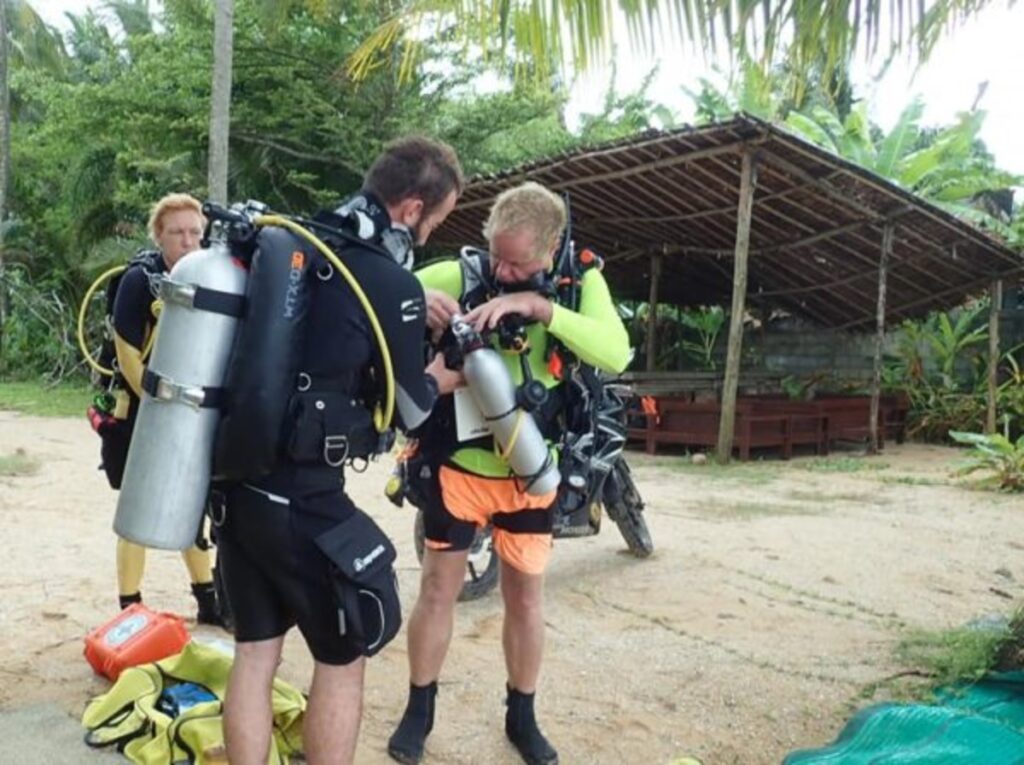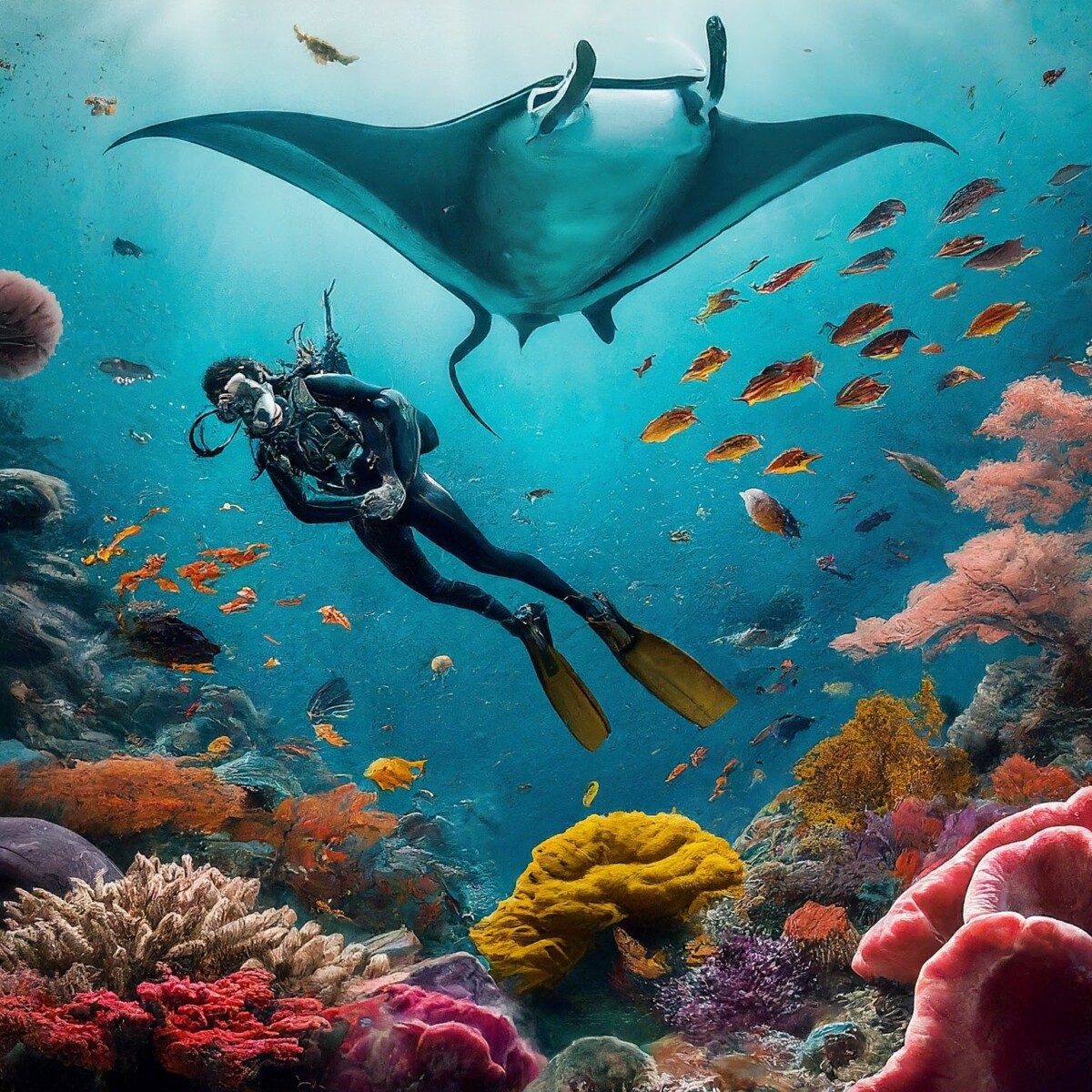Komodo National Park, a UNESCO World Heritage Site, is a diver’s paradise. Renowned for its breathtaking underwater landscapes, vibrant coral reefs filled with marine life, and the chance to encounter majestic manta rays and mighty currents that attract sharks, Komodo diving offers an unforgettable experience for divers of all skill levels. However, exploring this underwater wonderland requires careful planning and adherence to safe and sustainable diving practices. This guide provides essential tips for a thrilling and responsible Komodo diving adventure.
Pre-Dive Preparation: Planning Makes Perfect
- Choose a Responsible Dive Operator: Select a reputable dive operator who prioritizes safety environmental consciousness, and adheres to park regulations. Opt for operators with experienced and certified dive guides familiar with Komodo dive sites and currents.
- Research Dive Conditions: Komodo National Park experiences strong currents, particularly during tide changes. Research the specific dive sites you plan to visit and inquire about best practices for diving in currents with your chosen dive operator.
- Pack Essential Gear: Ensure your dive equipment is well-maintained and suitable for strong currents. Consider packing a reef hook to prevent damage to the coral while maintaining position in currents.
- Health and Fitness: Komodo diving requires good physical fitness. Ensure you are healthy and have no pre-existing medical conditions that diving may exacerbate. Additionally, consider completing a refresher diving course if you last dived a while ago.
Also Read: Luxury vs. Budget: Choosing the Right Komodo Cruise Experience
Diving Komodo Safely: Essential Practices
- Dive Briefing: Before each dive, pay close attention to the dive briefing conducted by your guide. This briefing will typically cover details of the dive site, expected currents, entry and exit points, safety procedures, and emergency protocols.
- Buddy System: Always dive with a buddy and develop visual contact throughout the dive. Communicate any concerns or issues to your buddy immediately.
- Buoyancy Control: Excellent buoyancy control is crucial in Komodo diving. Strong currents can quickly sweep divers away from the dive site. Master your buoyancy control skills to navigate currents safely and avoid damaging the delicate coral reefs.
- Respecting the Currents: Do not fight the currents. Learn to utilize currents to your advantage and signal to your buddy if you need to ascend or descend.
- Emergency Preparedness: Familiarize yourself with the emergency policy outlined by your dive guide. Ensure you understand how to use emergency oxygen equipment if available.

Sustainable Diving Practices: Protecting Paradise
- Minimize Your Environmental Impact: Komodo National Park is a fragile ecosystem with biodiversity. Be mindful of your impact on the environment. Avoid touching, standing on, or damaging coral reefs. Utilize proper reef etiquette and maintain a safe distance from marine life.
- Responsible Buoyancy: Maintaining proper buoyancy prevents accidental damage to coral reefs. Adequate weighting and excellent buoyancy control skills are key to environmentally responsible diving.
- Non-Polluting Gear: Choose eco-friendly sunscreen and avoid using products that pollute the marine environment. Ensure your dive equipment is clean and free of any contaminants.
- Support Conservation Efforts: Consider supporting local conservation initiatives to protect Komodo National Park and its marine life. Please inquire with your chosen dive operator about their sustainability practices and conservation efforts.
Beyond Safety: Maximizing Your Komodo Diving Experience
- Choose the Right Dive Sites: Komodo National Park boasts diverse dive sites catering to various diving skill levels and interests. Some popular dive sites include Manta Point (famous for manta ray encounters), Taka Makassar (known for its sheer walls teeming with marine life), and Currents of the Komodo National Park (ideal for drift dives with experienced divers). Work with your chosen dive operator to select diving sites best suited to your experience level and preferences.
- Respect Marine Life: Keep your distance from marine creatures safe. Avoid chasing or harassing them. Observe marine life in their natural habitat and avoid disrupting their behavior.
- Underwater Photography and Videography: Capture the beauty of Komodo diving with underwater photography or videography. However, prioritize the well-being of marine life and avoid using techniques that may distress them. Use natural light whenever possible to reduce the need for artificial lighting.
- Sharpen Your Skills: Komodo diving offers opportunities to refine your skills and explore advanced techniques. Consider taking a specialty diving course with your chosen dive operator, such as drift diving or underwater photography.
